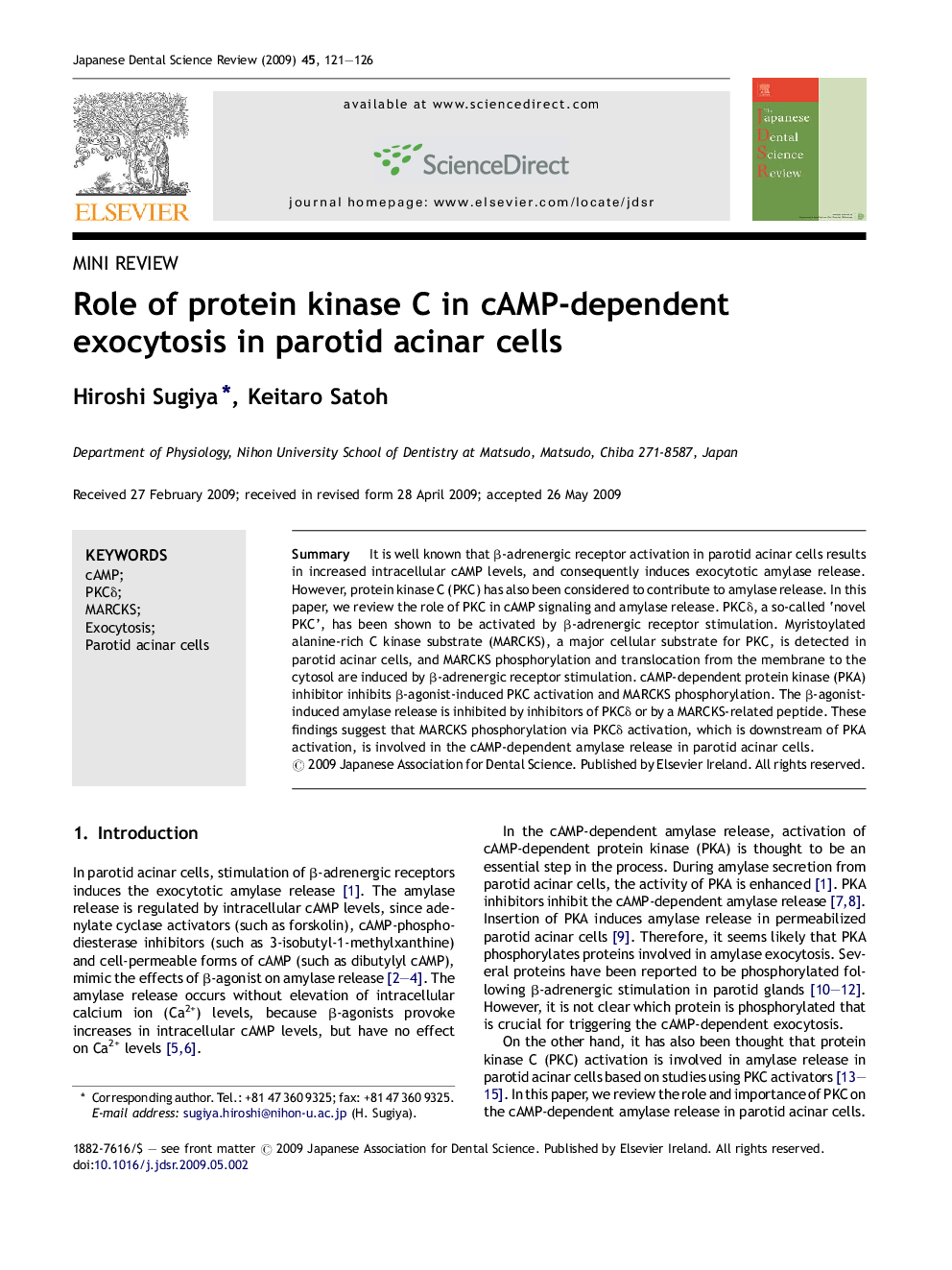| کد مقاله | کد نشریه | سال انتشار | مقاله انگلیسی | نسخه تمام متن |
|---|---|---|---|---|
| 3136230 | 1195458 | 2009 | 6 صفحه PDF | دانلود رایگان |
عنوان انگلیسی مقاله ISI
Role of protein kinase C in cAMP-dependent exocytosis in parotid acinar cells
دانلود مقاله + سفارش ترجمه
دانلود مقاله ISI انگلیسی
رایگان برای ایرانیان
کلمات کلیدی
موضوعات مرتبط
علوم پزشکی و سلامت
پزشکی و دندانپزشکی
دندانپزشکی، جراحی دهان و پزشکی
پیش نمایش صفحه اول مقاله

چکیده انگلیسی
It is well known that β-adrenergic receptor activation in parotid acinar cells results in increased intracellular cAMP levels, and consequently induces exocytotic amylase release. However, protein kinase C (PKC) has also been considered to contribute to amylase release. In this paper, we review the role of PKC in cAMP signaling and amylase release. PKCδ, a so-called 'novel PKC', has been shown to be activated by β-adrenergic receptor stimulation. Myristoylated alanine-rich C kinase substrate (MARCKS), a major cellular substrate for PKC, is detected in parotid acinar cells, and MARCKS phosphorylation and translocation from the membrane to the cytosol are induced by β-adrenergic receptor stimulation. cAMP-dependent protein kinase (PKA) inhibitor inhibits β-agonist-induced PKC activation and MARCKS phosphorylation. The β-agonist-induced amylase release is inhibited by inhibitors of PKCδ or by a MARCKS-related peptide. These findings suggest that MARCKS phosphorylation via PKCδ activation, which is downstream of PKA activation, is involved in the cAMP-dependent amylase release in parotid acinar cells.
ناشر
Database: Elsevier - ScienceDirect (ساینس دایرکت)
Journal: Japanese Dental Science Review - Volume 45, Issue 2, September 2009, Pages 121-126
Journal: Japanese Dental Science Review - Volume 45, Issue 2, September 2009, Pages 121-126
نویسندگان
Hiroshi Sugiya, Keitaro Satoh,